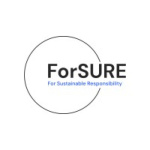How to Choose the Right Extended Producer Responsibility Software
For companies impacted by product stewardship and packaging waste regulations, Extended Producer Responsibility (EPR) software is becoming essential. It’s no longer just about compliance—EPR tools help manage costs, streamline data collection, and reduce exposure to regulatory risks. Choosing the right software requires a clear understanding of regulatory obligations, reporting needs, and how technology can reduce the burden on internal teams.
Why EPR Software Matters
EPR Software helps companies comply with regulations that hold producers responsible for the end-of-life management of their products—especially packaging, electronics, and batteries. These tools simplify the process of tracking packaging data, managing take-back schemes, submitting reports to authorities, and calculating applicable fees.
With EPR rules expanding across Europe, North America, and other markets, staying compliant means dealing with multiple registries, data formats, and reporting frequencies. EPR software consolidates these requirements, automating processes that would otherwise require significant manual effort.
Who is it for?
EPR Software is critical for manufacturers, importers, retailers, and e-commerce platforms that place products on markets with active EPR schemes. The most common user profiles include:
Sustainability & ESG Teams focused on reducing packaging waste and improving circularity
Regulatory & Compliance Officers managing obligations across countries and product categories
Operations & Supply Chain Managers handling data collection from suppliers and third parties
Finance Teams estimating and tracking EPR-related costs and fees
Product Stewardship Managers overseeing labeling, disposal, and take-back logistics
Key Capabilities That Make a Difference
A strong EPR software platform includes features that help businesses meet regulatory requirements with less friction and more clarity:
Multi-country Compliance Tracking: Regulations vary by jurisdiction. Good EPR software maps your obligations by country and product type, helping ensure accurate, localized reporting.
Packaging & Product Data Management: Centralized tools to gather, validate, and categorize product and packaging data—essential for accurate fee calculation and reporting.
Fee Calculation & Forecasting: Built-in calculators estimate EPR fees based on reported volumes and local fee structures, helping with budgeting and financial forecasting.
Reporting Automation: Automated generation and submission of reports to EPR schemes or government portals, reducing human error and saving time.
Audit Trails & Documentation: Version control, file attachments, and logs ensure you’re audit-ready and can verify every submission.
Supplier Collaboration: Some platforms offer portals or data exchange tools to collect upstream data from suppliers, especially important for complex or multinational supply chains.
The Value of Investing in EPR Software
Managing EPR manually becomes increasingly unsustainable as regulations spread and grow in complexity. EPR software reduces time spent on data wrangling and lowers the risk of non-compliance penalties. It also provides better visibility into EPR costs, which can be significant but often go untracked until after invoicing.
Beyond compliance, these tools help businesses assess and redesign packaging to reduce fees and environmental impact. As sustainability claims come under more scrutiny, having auditable, high-quality data helps support marketing and investor communications.
Current Trends in EPR Compliance
Eco-Modulated Fees Integration: More schemes are introducing fee structures based on recyclability, materials, or labeling. Software now needs to handle dynamic fee tables and recommend design-for-environment changes.
Real-Time Dashboards: Some vendors are introducing visual dashboards showing EPR exposure by country, material type, or business unit.
Supply Chain Data Sharing: Solutions are increasingly focused on APIs and supplier portals to make upstream data collection less burdensome.
Extended Scope Coverage: As EPR expands beyond packaging into textiles, batteries, and electronics, vendors are adapting platforms to cover multiple product categories.
Steps to Choosing the Right EPR Software
The right EPR solution depends on your product mix, geographic reach, and internal capacity. Start by identifying where you have reporting obligations and how your data is currently collected. Then evaluate software that aligns with the complexity of your needs.
Consider whether you need support for just packaging in one region or multiple product categories across multiple jurisdictions. Scalability matters—especially for fast-growing companies or those expanding into new markets.
Questions to Ask Potential Vendors
Does the platform support multi-country reporting and local fee structures?
Can it handle various EPR categories (packaging, electronics, batteries)?
How does it manage data collection from suppliers or ERP systems?
Are updates provided when regulations change?
What is the process for auditing and verifying submitted reports?
Is there flexibility to forecast or simulate EPR fees under different product scenarios?
By implementing robust EPR Software, companies can manage risk, improve efficiency, and ensure compliance with evolving global regulations—all while supporting broader sustainability and circular economy goals.

